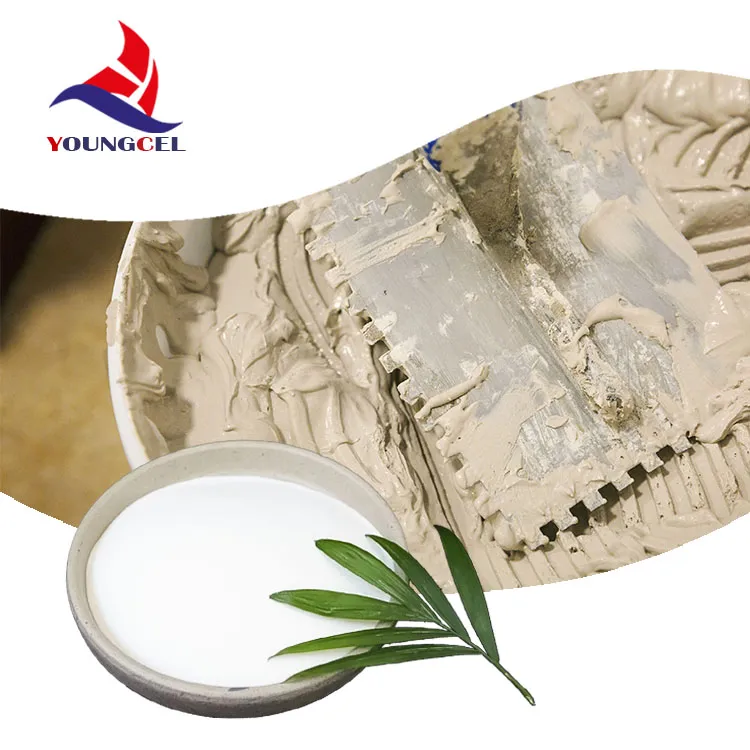Understanding Cellulose Ether Chemical Adhesives
Cellulose ether chemical adhesives have gained considerable attention in various industries, including construction, automotive, pharmaceuticals, and consumer goods. These adhesives derive their properties from cellulose, a natural polymer that is abundant and renewable. This article explores the nature, benefits, applications, and environmental considerations of cellulose ether chemical adhesives.
What Are Cellulose Ethers?
Cellulose ethers are modified forms of cellulose, created by substituting hydroxyl groups in the cellulose structure with ether groups. This modification enhances the solubility and functionality of cellulose, enabling it to form adhesives that exhibit desirable properties such as flexibility, water retention, and viscosity control. Common cellulose ethers include hydroxypropyl methylcellulose (HPMC), hydroxyethyl cellulose (HEC), and carboxymethyl cellulose (CMC).
Key Properties
1. Adhesive Strength Cellulose ether adhesives provide strong adhesion to a variety of substrates, including wood, metal, and plastic. Their unique chemical structure allows for effective bonding even in challenging environments.
2. Water Solubility Many cellulose ethers are soluble in water, which makes them easy to work with. This solubility also allows for a controlled drying process, crucial for applications requiring precise results.
3. Viscosity Control Depending on the desired application, cellulose ethers can be formulated to achieve specific viscosities. This versatility allows manufacturers to adjust the adhesive for different uses, from thick pastes to thin coatings.
4. Thermal Stability Cellulose ether adhesives exhibit good thermal stability, maintaining their performance under varying temperature conditions. This quality is particularly important in industries like construction and automotive, where materials are often exposed to heat.
5. Biodegradability As derived from natural cellulose, these adhesives are generally biodegradable, making them more environmentally friendly compared to synthetic adhesives. This aspect helps companies meet sustainability goals and reduce their carbon footprint.
Applications
cellulose ether chemical adhesive

Cellulose ether chemical adhesives are used in a wide range of applications
- Construction In construction, these adhesives are essential for bonding tiles, drywall, and insulation materials. Their water-resistance properties make them ideal for both interior and exterior applications.
- Pharmaceuticals The pharmaceutical industry uses cellulose ethers as binding agents in tablet formulations. They help improve the texture and efficacy of the medications, ensuring that the active ingredients are delivered effectively.
- Food Industry Cellulose ether adhesives are also found in food packaging to ensure products remain fresh and contamination-free. They create a barrier that enhances the shelf life of food items.
- Consumer Goods Many consumer goods, from toys to furniture, utilize cellulose ether adhesives due to their versatility and strong bonding attributes.
Environmental Considerations
With the growing emphasis on sustainability, cellulose ether adhesives stand out due to their eco-friendly nature. Being derived from renewable resources, they help reduce reliance on petroleum-based products. Furthermore, the biodegradability of these adhesives contributes to less environmental pollution.
However, it is crucial for manufacturers to ensure that the production process for cellulose ether adhesives is sustainable. This includes responsible sourcing of raw materials and minimizing emissions during production. By adopting greener practices, companies can enhance the environmental benefits of cellulose ether adhesives.
Conclusion
Cellulose ether chemical adhesives represent a significant advancement in adhesive technology, offering a combination of strong bonding capabilities, versatility, and eco-friendliness. Their wide range of applications across various industries, coupled with their renewable nature, makes them an attractive choice for manufacturers seeking sustainable solutions. As the demand for greener products continues to rise, cellulose ether adhesives are likely to play an increasingly prominent role in the adhesive market, contributing to a more sustainable future.
-
Rdp Powder: Key Considerations for Wholesalers in the Building Materials IndustryNewsJul.08,2025
-
Key Considerations for Wholesalers: Navigating the World of Hpmc - Based ProductsNewsJul.08,2025
-
Hpmc Detergent: Key Considerations for WholesalersNewsJul.08,2025
-
Key Considerations for Wholesalers: China Hpmc For Tile Adhesive, Coating Additives, Concrete Additives, and MoreNewsJul.08,2025
-
Crucial Considerations for Wholesalers: Navigating the World of Construction MaterialsNewsJul.08,2025
-
Key Considerations for Wholesalers Sourcing Additive For Cement, Additive For Concrete, Additive For Putty from Additive Manufacturer Shijiazhuang Gaocheng District Yongfeng Cellulose Co., Ltd.NewsJul.08,2025




